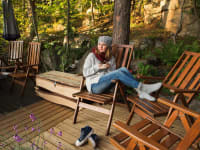Products are chosen independently by our editors. Purchases made through our links may earn us a commission.
Everyone’s patio is different. A simple plastic table with a built-in umbrella, wicker chairs with outdoor-safe cushions, or a full-on outdoor kitchen: Regardless of your outdoor patio setup, when winter rolls around, you should pack up at least some of your patio furniture.
When it comes time to put any item away into storage, there are three simple rules that almost universally apply: clean everything up, repair any damages, and store safely.
Of course, how to best accomplish these three steps varies depending on what sort of patio fixture you’re dealing with, and it’s always a good idea to check your furniture or cushions for manufacturer-specified guidelines.
If you want to know why it's a good idea to store your outdoor furniture, when, technically, they're meant to live outside, consider that you’re effectively reducing the items' lifespans by not taking proper care. Constant sunlight, freezing temperatures, mildew growth, and small animals can all cause premature, lasting damage to your outdoor furniture.
So, if you do want to get the most out of your patio furniture, here is how to implement a proper care regime.
Clear away all that outdoor grime
Before you start cleaning, check the manufacturer’s care instructions. Theoretically, outdoor furniture should be pretty robust as it needs to stand up to the elements, but you also don’t want to accidentally damage something during an effort to prevent it from being damaged.
Wipe down plastic, metal, and wood surfaces
First, spot test out your cleaning agent of choice. For most surfaces, such as plastic, metal, and wood, it’s a good idea to start with a mild cleaner initially, like plain dish soap.
You’re looking for any sign that the finish, paint, or stain comes off or otherwise gets marred as you clean. If this happens, it may be worth your time to track down proper care instructions. Otherwise, you’ll be better off with a specialty cleaner.
If you need more cleaning power than dish soap, you could try mineral spirits. This can definitely damage some surfaces, so remember to spot test before rubbing the whole piece of furniture down.
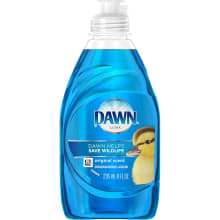
Regular dish soap is often enough to scrub everything spotless.
Launder outdoor fabrics
Cushions are especially important to clean, as they’re very porous and have likely become home to at least some tiny flora and fauna over the course of the summer. If your cushions are machine washable, that’s the best way to get them clean.
With that said, some cushions are not machine washable. If you try to put them into a washing machine, they may be damaged by a cycle that’s too rough. One way to wash a bunch of cushions by hand is to draw them a bath. Fill up your tub, add the soap or detergent of your choice, and then scrub all surfaces down with a soft-bristle brush. If the cushions have removable casings, you can wash both case and contents separately, to make sure every surface is spotless.
Any other fabric, rope, or hammock that has been left in the elements should be washed in a similar fashion.
Be careful about machine drying these items. In most cases, air drying them outside for a day is sufficient, and do make sure they’re completely dry before you storing them for the winter season.
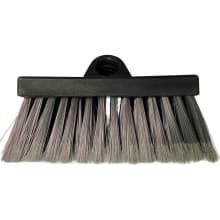
If you need some extra scrubbing power, use a soft-bristle brush.
Keep your patio area clear
If your patio area rests on concrete or stones, make sure to keep that area clean of snow and ice as winter progresses. As snow melts it can seep into cracks, and when it refreezes it can widen those cracks, which leads to your stonework, tiles, or pavers getting pushed out of alignment or breaking.
Repair any damages
After thoroughly cleaning everything, you’re probably aware of every nick and scrape around the rough edges of your patio furniture. While maintenance can be a pain, it can also stretch out the lifespan of your patio furniture.
Working repairs into your seasonal storage routine is a good way to make sure it happens regularly.
While it might be tempting to put maintenance off until spring, it makes more sense to do it before putting things into storage, because the scope of necessary repairs will be much fresher in your memory. Not to mention, certain kinds of disrepair only get worse in storage.
Tighten bolts and refresh worn wood
Nobody wants to put away a wobbly chair that needs its screws tightened, remove it from storage six months later having forgotten all about it, and discover it immediately collapses under your weight when you sit. So, make sure any loose screws or bolts are tightened up before you put them away for storage.
While you have your tools out, if your wooden surfaces aren't looking particularly new, it may be time to refinish them. Depending on how deep down the restorative rabbit hole you want to go, a refinishing task of this sort can be labor intensive. You should allot a day for sanding and refinishing, an overnight to dry, and another day to apply a waterproof sealant. Remember: These chemicals are fairly noxious, so make sure you use them in a very well-ventilated area.
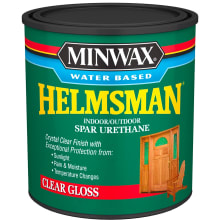
Keep surfaces sealed to prevent rotting and rusting.
Apply sealant and protective coatings
From fabric to metal, you'll want to seal up any vulnerable areas on your furniture to prevent additional weather and animal related damage.
If you find rust on any surface, treat it with a rust primer before putting it away. This is one of those issues that gets worse the longer it goes without repair, so seal rust early and often.
In the same vein, seal any tears in a piece of fabric with a needle and thread first, or waterproof fabric glue. For mesh or plastic, you can use fishing line to suture everything together again.
Now is also a good time to spray down anything that sits in the sun with a UV protection spray to help prevent future fading and cracking.
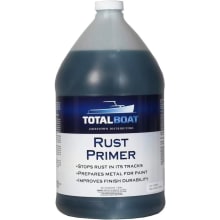
Prevent rust before it starts (or before it gets worse) with rust primer.
Make sure everything is dry
Any pillow or piece of furniture that you put away wet is going to come out of storage very, very smelly—especially if you're storing your furniture under a tarp. Items in storage will typically be in areas with very low air circulation, so any excess moisture will evaporate more slowly, allowing mildew to flourish.
Let any damp objects air dry outside for a day or two before putting them into storage.
Store your furniture
Again, direct sunlight and freezing temperatures can wreak havoc on your patio furniture, so take them to an indoor location during the off-season. While stacking everything up in a basement or shed is a better route to take, you can still take protective measures if you don’t have a shed (or other indoor storage options).
For starters, you’ll want to stack everything together as much as possible. Put chairs off to the side or next to other patio fixtures. Condense everything into the same small space so they can all fit under a single tarp.
Tarps come in many different sizes, so measure before you order and account for some slack to spare.
You also want to make sure you’re buying a tarp specifically made for outdoor use. Features to look for include: waterproof, UV resistant/blocking, and rustproof (for tarps with metal grommets).
Once you have everything under the tarp, you might want to consider staking the tarp down—especially if you get heavy winds in your area.
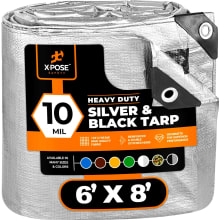
Tarps can provide an additional layer of protection for your patio.
Enjoy the season!
Once everything is clean, fixed, and safely stored away, there’s nothing left to do but enjoy your autumn and winter, relaxed with the knowledge that your patio loose ends have all been successfully tied up.

